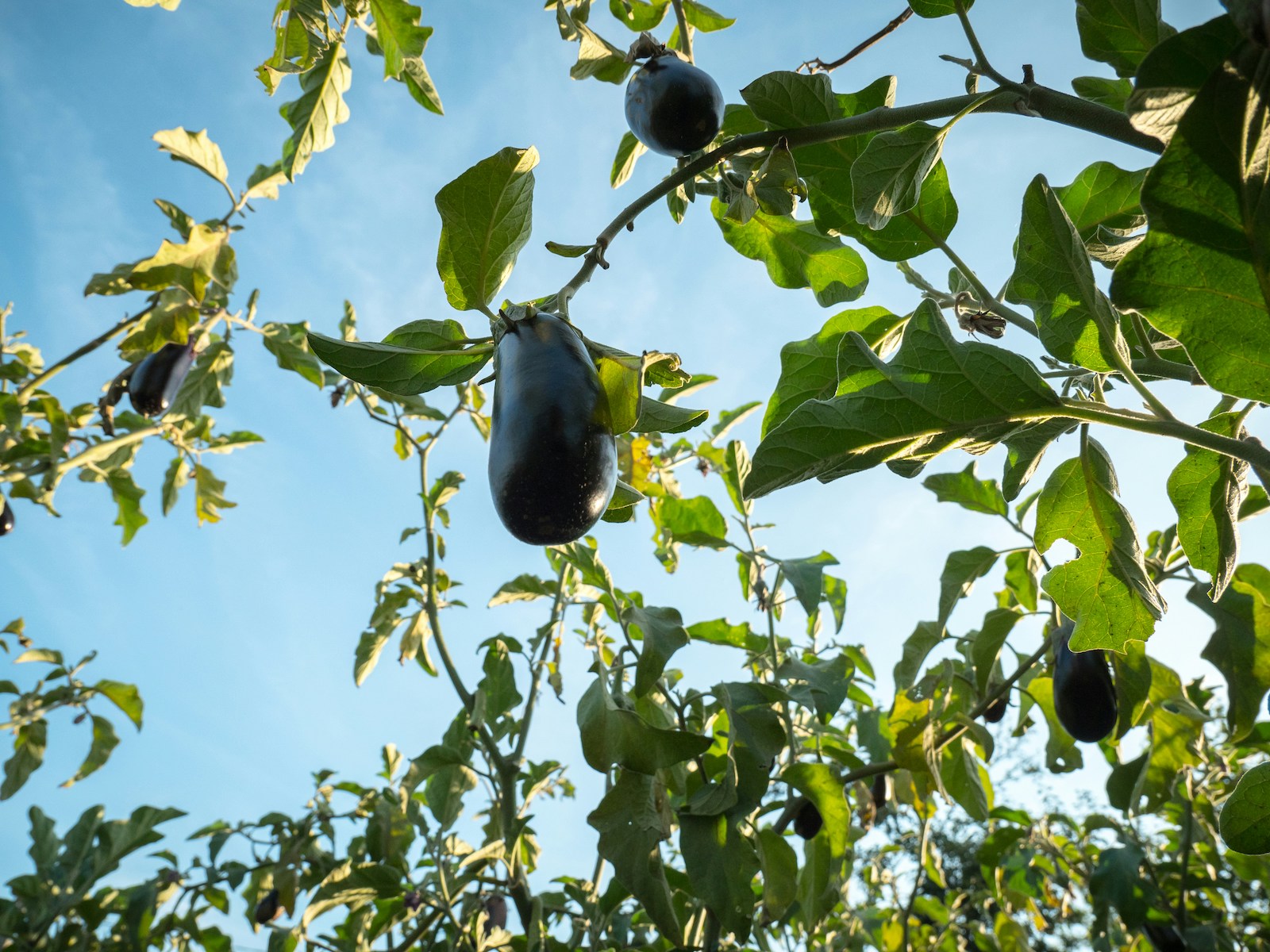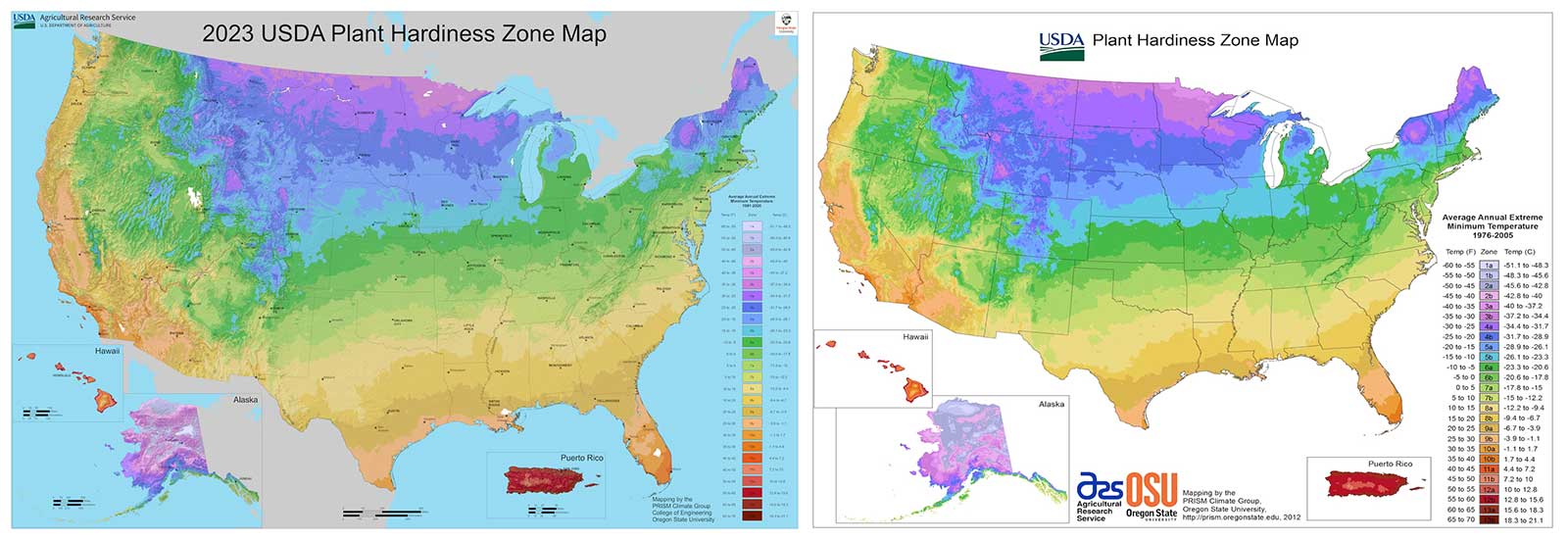In November 2023, the USDA released a new plant hardiness zone map for the first time in a decade. The new map shows a 2.5 degree Fahrenheit increase in temperature overall, with about half the country moving up a half zone. This influences what plants can be grown where, and may herald broader shifts for food production in the U.S.
What is a plant hardiness zone?
Plant hardiness zones are based on the most extreme temperatures in a particular area looking at 30 years of data to find each year’s single coldest temperature. Based on this data, zones are created, with each numbered from 1 to 13. Each number encompasses a range of 10 degrees fahrenheit, and is divided into two (a and b) indicating a 5 degree window. Zone 1a is the coldest part of Alaska where lows reach -60 to -65 degrees Fahrenheit. Zone 13b is at the other extreme, in Puerto Rico, with lows of 60 to 75 degrees Fahrenheit.
Checking your plant hardiness zone is always a good practice - it tells you what can survive your winter weather. For example, Zone 3 includes the upper reaches of the continental United States’ east coast, midwest, and great plains regions. Many perennial plants and trees cannot survive the winter lows of -40 to -30 degrees Fahrenheit. Meanwhile, Zone 8 encompasses the Southeast U.S. and Central Texas, with mild winters and hot summers generally suited to growing citrus and nut trees.
The new map
The USDA plant hardiness map is created in collaboration with the PRISM Climate Group at Oregon State University. This year’s map incorporates data from almost twice as many weather stations as were used for the previous version, and is about 2.5 degrees Fahrenheit warmer, with half the country shifting to warmer plant hardiness zones.
Chris Daly, director of the PRISM Climate Group, says that the volatility of the main indicator tracked for the hardiness map makes it hard to attribute this specific shift to climate change. However, Daly expects to see similar shifts continuing due to climate change moving forward: “over the long run, we will expect to see a slow shifting northward of zones as climate change takes hold.”
So what does it mean for your growing season?
As always, you’ll want to select plants (seeds and otherwise) that are graded for your zone. If you’re a long time gardener, give it an extra peek just in case. You might find that you can grow more plants than you used to, or that your favorite varieties are no longer optimal for your temperatures.
Regardless of your zone, you can get creative to grow the food of your dreams. In chilly areas, Pineapple and citrus can summer outside in pots and be brought indoors for the cold months. In warmer zones, cold weather crops can grow well during your mild winter with frost protection, or before the risk of frost begins.
And keep in mind that plant hardiness zones are limited. They really only tell you what the coldest temperature reached is. There is plenty of variation in climate between zones. These zones don’t tell you anything about your area’s high temperatures, precipitation, or growing season. For example, many plants struggle in extended hot dry weather. And areas with very short growing seasons - the time between the last and first frost of the year - may have difficulty growing plants like winter squash and eggplant, which need long warm growing seasons.

What should we expect?
While the shifts seen in this growing zone map may or may not be attributable to climate change, scientists expect these shifts to continue over time due to warming global temperatures, with major impacts for ecosystems:
“By the end of the century, Washington, D.C., could become too hot for trees that live in Zone 7 but not in Zone 8 — including Christmas tree species like Fraser firs and blue spruces. Meanwhile, new arrivals, like the aforementioned cabbage palmettos, also called sabal palmettos, and desert willows, which flower across the southwest and northern Mexico, could survive the D.C. winter.”
The forest service is already undertaking a controversial practice known as “assisted migration” - shifting trees to new locations to help them survive climate change. And warming temperatures bring other concerns - the cold temperatures that previously killed off invasive plants and insects, raising concerns about the continued proliferation of invasive species like kudzu and marmorated stinkbugs.
Meanwhile, many farmers and horticulturalists are thinking differently about what to plant, developing new varieties to survive more difficult conditions, or just shifting the way they think about what’s possible in their region. As temperatures continue to rise, activists and scientists fear that this shift may be just the beginning of what is to come.

